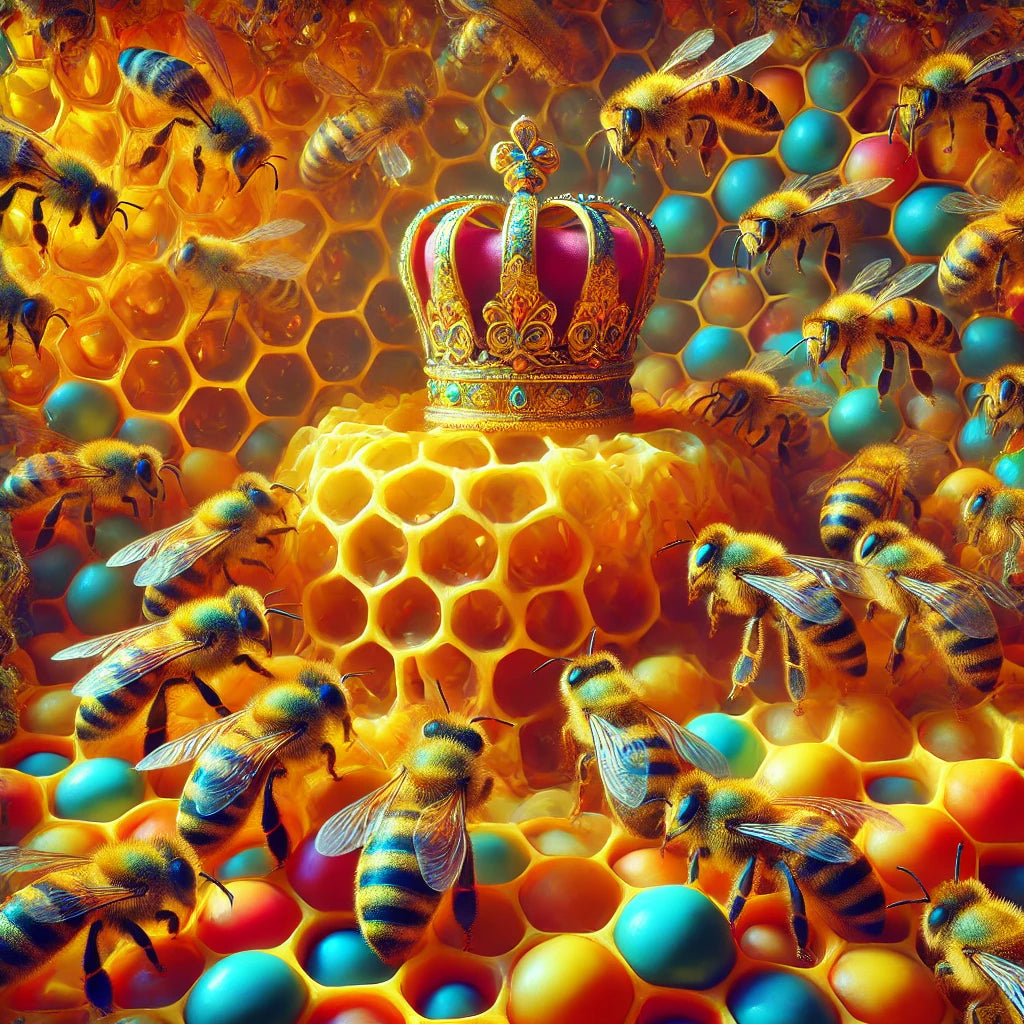In the intricate world of beehives, queen bees hold the highest rank, but not all queens come to power through the front door. Some emerge through a lesser-known process, known as becoming a back door queen.
These queen bees, often arising from unnoticed or overlooked cells, can unexpectedly rise to prominence and change the dynamics of the hive. Understanding this unique part of the life cycle of bees offers fascinating insights into hive hierarchies and the powerful role of the queen.
The Role of Queen Bees in a Hive
A hive revolves around its queen bee, the sole egg-layer responsible for producing the thousands of workers and drones that keep the colony running smoothly. However, becoming a queen is not an easy task. In most cases, several larvae are raised as potential queens, and only one will emerge victorious.
The process can be a fierce battle for dominance, where the most powerful and well-fed queen rises to power. But in some cases, an unnoticed or overlooked queen cell can produce a back door queen, quietly slipping into power.
The Emergence of a Back Door Queen
While the main queen battle plays out at the center of the hive, a back door queen might emerge from a cell tucked away, far from the commotion. She can be the hive’s unexpected leader if something happens to the reigning queen, like death or unexpected weakness. This secretive rise can stabilize a hive in times of disruption and ensure that the colony continues to thrive.
In the honey bee swarms, it’s also common for new queens to emerge as colonies split. While swarming queens tend to take the front stage, the back door queen remains hidden, ready to take charge if the original queen fails to establish her new colony. This adaptability ensures the longevity and resilience of bee colonies.
The Life Cycle of a Queen Bee
The journey of a queen bee starts with the selection of larvae that are fed royal jelly, a special protein-rich substance that transforms regular larvae into potential queens. The emerging queens face off in a deadly duel, as only one queen can rule the hive. However, when a back door queen quietly matures and skips the typical power struggles, she represents the hive’s adaptive strategy to ensure survival.
This unique form of emergence is fascinating when considering how adaptable and complex bee societies are. The life cycle of bees and their intricate social structures are vital to maintaining hive health and success. This adaptability is what makes honey bees so vital to agriculture, as their ability to thrive in dynamic conditions supports robust pollination processes.
For beekeepers, recognizing the potential for back door queens can offer important insights into hive management. Ensuring that a hive maintains a strong, fertile queen is crucial for productivity. Tools like bee trap attractants can help keep bees organized and focused on specific tasks, while bee hive relocation ensures that colonies remain stable. If a queen is lost, a back door queen could be a surprising but welcome solution for a disrupted hive.
Additionally, those looking to expand their knowledge of hive dynamics or learn how to start a bee farm can benefit from understanding these hidden processes. It highlights the importance of always staying attuned to the subtle shifts within the hive that could lead to the emergence of new leaders.
Ensure Hive Stability with Swarm Commander
The world of queen bees is more complex than it first appears, with the possibility of a back door queen quietly taking the reins when needed. Understanding this hidden aspect of bee life offers a deeper appreciation for the adaptability and resilience of hives. For beekeepers, staying aware of this possibility can provide new strategies for managing colonies. From bee trap attractants to bee hive relocation, there are many tools to help ensure that your hive remains healthy and productive, no matter which queen leads the way.
Interested in enhancing the health and productivity of your hives? Visit Swarm Commander to explore our range of products, including bee trap attractants and tools for effective bee hive relocation. Keep your hive thriving, whether under a primary queen or a hidden back door queen!
Frequently Asked Questions About Black Door Queens
Q1. How do back door queens affect hive hierarchy?
Back door queens can unexpectedly rise to power, often bypassing traditional queen battles, stabilizing the hive in the absence of the main queen.
Q2. What are the key benefits of a back door queen in times of crisis?
A back door queen can ensure the hive’s survival if the original queen dies or becomes ineffective, allowing the colony to continue thriving.
Q3. How can beekeepers manage the emergence of back door queens?
Beekeepers can monitor hive dynamics and ensure healthy queen development through tools like bee trap attractants and bee hive relocation methods to maintain stability.
Q4. Are back door queens common in swarms?
While swarming usually involves a primary queen, back door queens can emerge in cases where the primary queen fails to establish a new colony.



